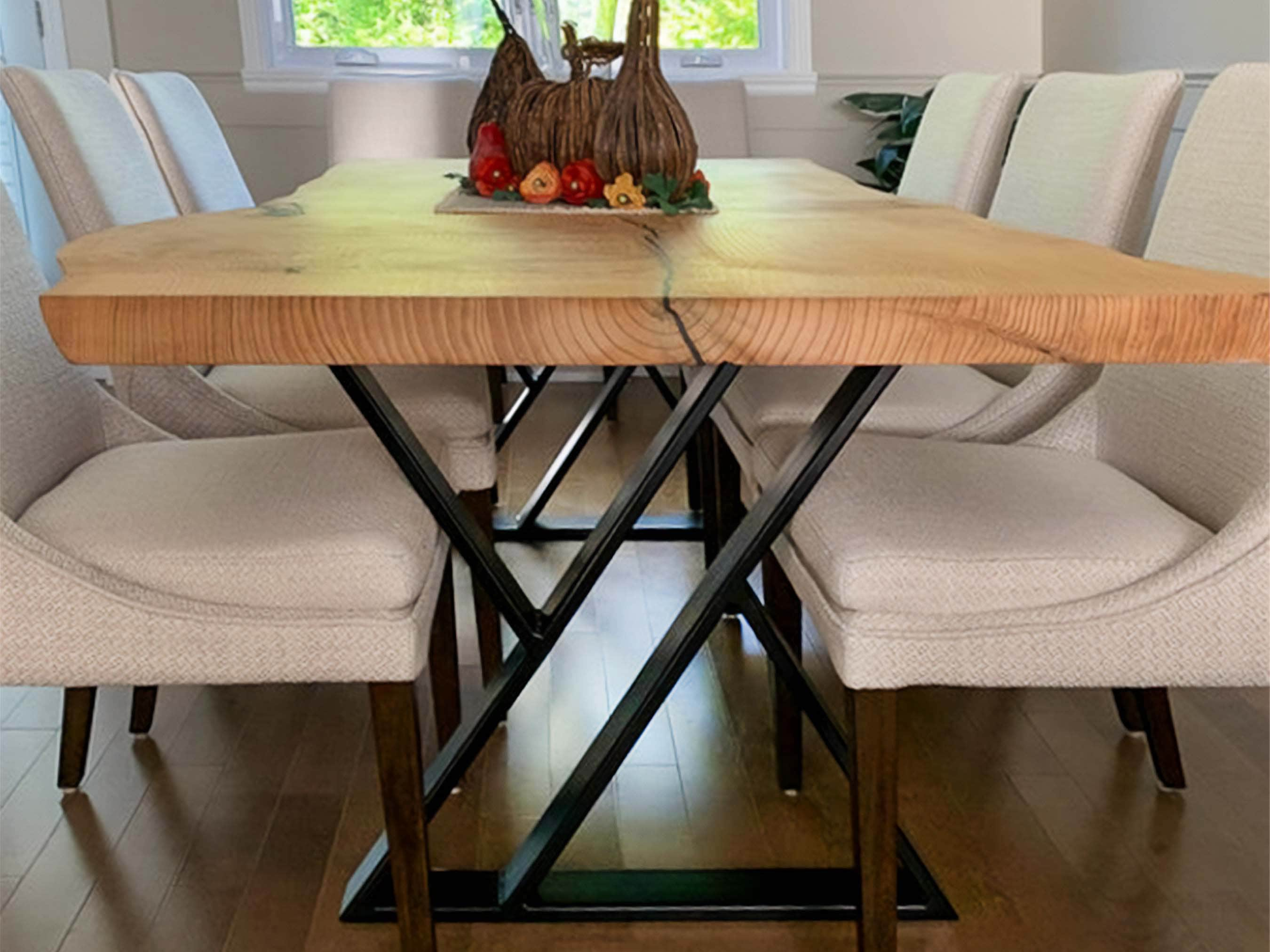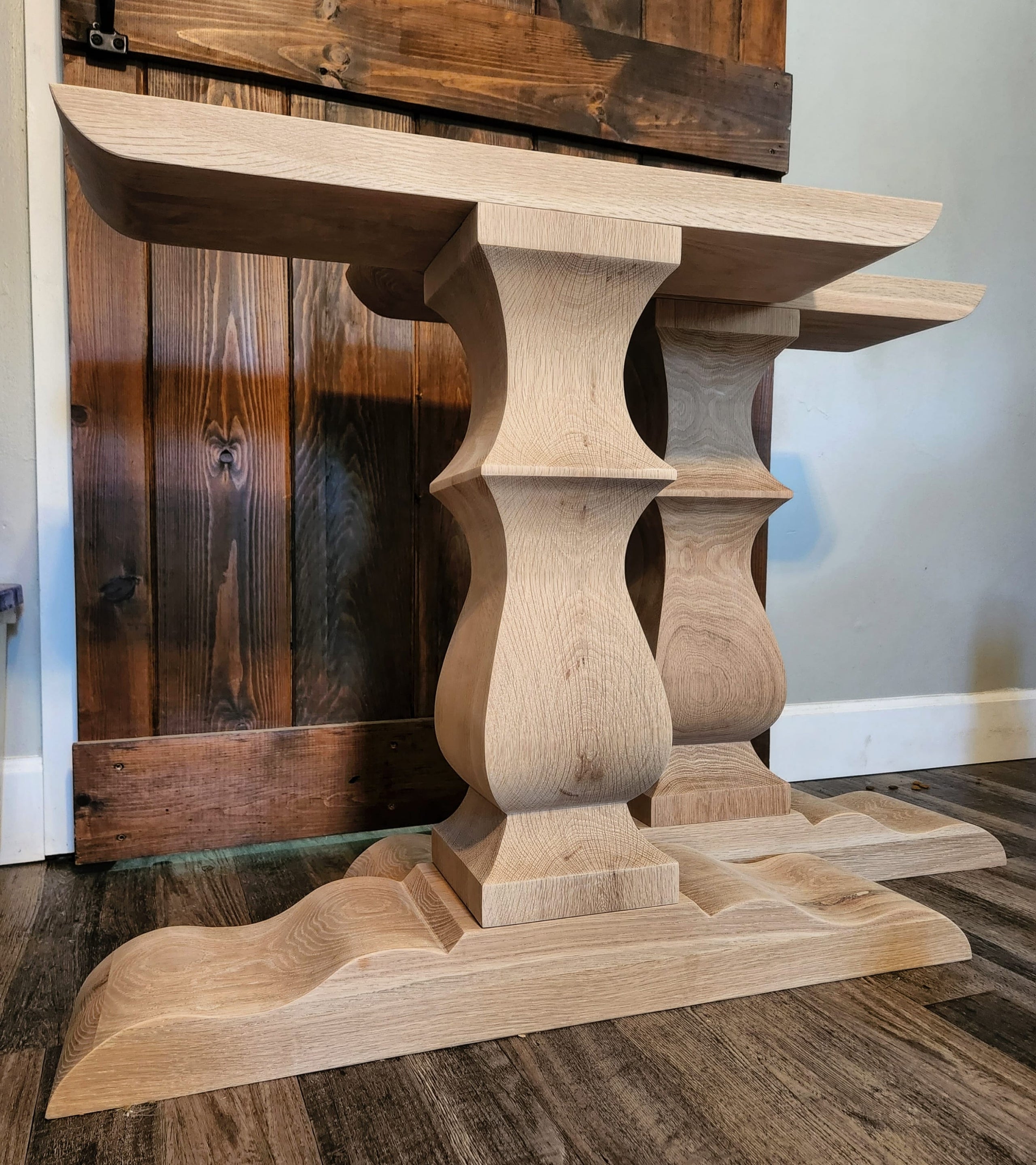Table Legs: How to Select the very best Designs for Your Area
Choosing the appropriate eating table legs is vital for both aesthetic and functional consistency in your eating area. Whether your room flaunts a smooth, modern ambiance or leans in the direction of a more traditional setting, the style of the legs can considerably affect the general look. Conical legs emanate contemporary elegance, while transformed legs provide a nod to timeless appeal. Beyond design, the material-- be it cozy wood or streamlined metal-- plays a pivotal duty in establishing the tone. However exactly how do you ensure these components match your existing style while supplying the necessary security? The response hinges on a balanced strategy.
Evaluating Your Eating Area Style
Just how do you determine the best table legs for your area? The response begins with a detailed assessment of your dining-room style. A natural layout ensures that your table legs enhance the overall aesthetic instead of encounter existing components. Beginning by observing the building attributes of your dining-room. Exist famous attributes such as revealed beam of lights, complex moldings, or minimal lines? These details typically dictate whether a conventional, rustic, contemporary, or commercial design is most proper.
Next, think about the existing furniture and decor. The products, colors, and textures within the area play an important function. An eating room with streamlined, contemporary chairs and metal accents may benefit from basic, streamlined table legs. Alternatively, a space filled with vintage pieces and abundant materials might require ornate, sculpted legs.
Illumination additionally affects assumption. Natural light can highlight certain materials and coatings, while artificial illumination can highlight various elements. Account for the space's range and percentages. Large, open dining-room can fit heavier, more substantial legs, whereas smaller spaces call for more delicate, inconspicuous designs. By carefully assessing these variables, you can choose eating table legs that harmoniously blend with your eating room's style.
Popular Leg Styles Explained

One common design is the tapered leg, renowned for its streamlined, modern appearance. This leg narrows inside out, providing a minimal appeal appropriate for modern and Scandinavian interiors. Next off, the transformed leg functions detailed spindle-like designs, commonly found in standard and farmhouse setups. These legs add a touch of craftsmanship and style.
Cabriole legs, with their unique curves, are identified with French Provincial and Queen Anne furnishings. Their graceful, flowing lines bring a sense of class and historic charm (dining room table legs). For those favoring a robust and simple style, square legs supply tough assistance and a clean, geometric appearance, ideal for industrial or minimalist areas
Finally, barrette legs use a retro, mid-century modern-day ambiance. Made from metal, these legs are both lightweight and strong, adding a distinct visual contrast to wooden tabletops. Understanding these styles will direct you in choosing dining table legs that improve your space's aesthetic and functionality.
Material Considerations

Steel legs, often made from stainless steel, iron, or aluminum, offer a contemporary and commercial appearance while ensuring robust support. They are usually a lot more immune to put on and tear, making them a durable choice.

Other materials like bamboo or rattan supply green alternatives, bringing an all-natural and relaxed vibe to the eating area. Each material has its benefits and drawbacks, and the most effective selection will depend upon your details needs click here now and choices.
Harmonizing Aesthetic Appeals and Capability
Achieving the best equilibrium between looks and capability is vital when picking table legs. While the visual charm of table legs can substantially boost the overall atmosphere of an eating room, their useful aspects can not be neglected. The design of the legs have to integrate with the room's decoration, yet they must additionally give adequate support and stability for the table.
Think about the building style of your room. Streamlined, modern-day insides might gain from minimal, steel legs that offer a clean and unobtrusive look. On the other hand, traditional settings frequently match turned or carved wooden legs that add a touch of elegance and elegance.
Functionality encompasses the stability and resilience of the legs. As an example, trestle legs, known for their robustness, can provide strong assistance for bigger tables, making them suitable for family members or regular performers. dining room table legs. Conversely, websites pedestal legs can Discover More Here supply even more legroom and versatility, permitting better seats plans
Furthermore, the height and positioning of the legs are crucial for comfy dining. Legs placed also far inward might hamper seating, while those also near to the edge can restrict motion. Thus, thoughtful factor to consider of both visual and functional components is vital for an optimal eating experience.
Personalization and DIY Options
Modification opens a world of possibilities for developing eating table legs that are uniquely customized to your taste and demands. Whether you seek a typical, contemporary, or diverse look, individualized choices permit you to choose the specific materials, coatings, and develops that ideal complement your room. Customizable alternatives range from picking the type of timber-- such as oak, maple, or walnut-- to picking metal surfaces like combed nickel or antique brass. Certain layout elements, such as transformed legs, tapered forms, or intricate carvings, can be included to reflect your style.
For those likely in the direction of diy (DO IT YOURSELF) projects, creating customized eating table legs supplies both a rewarding experience and the opportunity to achieve a bespoke visual. DIY fanatics can source raw products and make use of woodworking or metalworking tools to craft legs that meet specific requirements. In addition, various on the internet tutorials and workshops give advice, making the procedure extra accessible for beginners.
Ultimately, whether going with professional personalization or beginning on a DIY venture, the ability to tailor dining table legs ensures that the end product integrates with your indoor style vision, improving both performance and aesthetic appeal.
Conclusion
Picking the ideal eating table legs needs cautious consideration of the overall design of the dining-room, including existing architectural features and furnishings. Comprehending prominent leg styles and product choices is necessary for accomplishing a harmonious visual. Stabilizing aesthetic appeals with functionality ensures security and improves the dining experience. Modification choices even more enable a customized design. Inevitably, the selected table legs ought to enhance the decoration, offering both aesthetic charm and practical assistance.